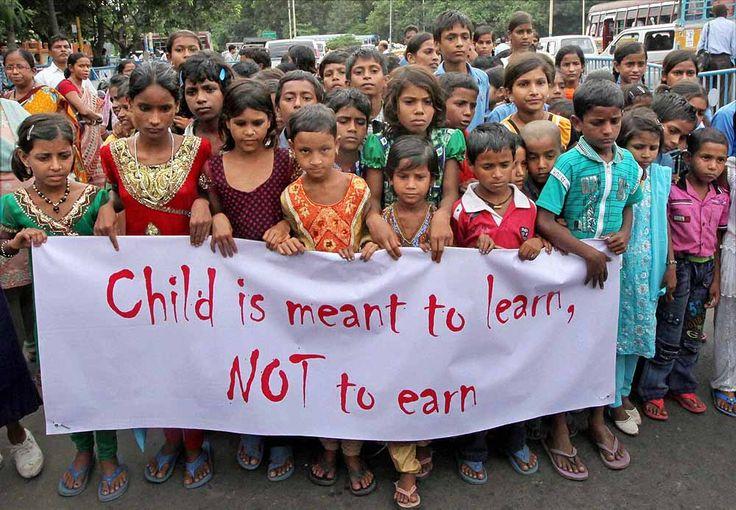The International Labour Organization (ILO) commemorates the World Day Against Child Labour on 12th June. United Nations defines Child Labour as
“work carried out to the detriment and endangerment of a child, in violation of international law and national legislation. It either deprives children of schooling or requires them to assume the dual burden of schooling and work.”
Forms of Child Labour
International Laws classify three forms of Child Labour:
- The worst form of child labour – slavery, trafficking, debt bondage, forced recruitment of children for use in armed conflict, prostitution and pornography and other illegal activities
- Labour performed by an underage child that is likely to obstruct the child’s education and full development
- Hazardous Work – Labour that endangers the physical, mental or moral well-being of a child because of its nature or working conditions
“73 million child labourers are between 5 and 11 years old”
Around the world, children are browbeaten through mentally and physically dangerous work. It hinders their schooling and long-term development. Children have fragile minds. Extensive labouring deprives them of their childhood, potential and dignity. It aggravates the risk when work exceeds into more hours. Also, children become vulnerable to abuse.
Often the reason that children have to toil is to help their families to make ends meet. In extremes sometimes the children are forced to work due to fear of death.
According to the UN, a few cases concerning child labour make it to the Courts. Only 1.5% of reports received concerning child labour contains information on Court decisions. This compares with 8% of the reports on discrimination, 7.8% on forced labour and 5.8% on freedom of association.
Minimum Age for Work
The ILO provides an age scale which allows children to be legally employed.
| The minimum age at which children can start work | Possible exceptions for developing countries | |
| Hazardous work Any work which is likely to jeopardize children’s physical, mental or moral heath, safety or morals should not be done by anyone under the age of 18 |
18 (16 under strict conditions) |
18 (16 under strict conditions) |
| Basic Minimum Age The minimum age for work should not be below the age for finishing compulsory schooling, and in any case not less than 15 |
15 | 14 |
| Light work Children between the ages of 13 and 15 years old may do light work, as long as it does not threaten their health and safety, or hinder their education or vocational orientation and training. |
13 – 15 | 12 – 14 |
“If you love yourself, do not let them mistreat you”
Luzmila at the age of 12 went to Lima as a domestic worker. Her employer ill-treated her for over two years. The employer forced her to work extremely long hours, converted her to Catholicism and cut her hair against her will. But she was allowed to attend an evening school. Her teachers told her about a project working with child domestic workers run by Asociacion Group Trabajo Redes (AGTR) and Anti-Slavery International.
As a result, her employer didn’t allow her to visit them but Luzmila secretly visited them and told her story. A few months later she finally mustered the courage to leave her employer. She found a new place through an agency where she enjoys a regular day off and much lighter work.
She wants to become a Beautician. Luzmila has become a leader among her colleagues. Her favourite saying is, “If you love yourself, do not let them mistreat you.”
There are more stories like this where the children find a happy ending. While there are others who are still abused and mistreated. As a result, their innocent childhood dreams are shattered and it is our duty to stand against this.
There are help lines and websites which will help you report about child labour that you have witnessed or have heard of. It will surely make a difference in a child’s world if you take the step to rescue them.
“The number of child labourers in the world has decreased by a third since 2000”


